ProView – EXPED Camp Slipper
The EXPED camp slippers spent more time on my feet than any other single pair of shoes through the late fall, winter, and early spring. They kept my toes warm during unseasonably cold nights while climbing in Mexico, helped get the feeling back in my feet after several cold-water SUP sessions in Lake Michigan, and primed my distal digits for some serious late-fall sendage in the Red River Gorge. But to be honest, most of the time I wore my Camp Slippers was simply while lounging around my house. I even wore them to class a few times. (Spoiler Alert: they are not the most fashionable according to my classmates, friends, professors, and random strangers, but what true outdoorsperson cares about fashion?) These slippers helped me ride out the cold, depressing Midwestern winter, and *dare I say it* I’m already looking forward to when the temperatures drop in the fall so I can break them out full-time.
EXPED Camp Slipper
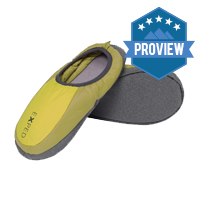
Product Description: Camp Slipper goes anywhere, ready to warm those toes in camp, in a hut or at home.
Offer price: MSRP: $39.00
-
Quality
(3)
-
Fit
(4)
-
Performance
(4)
-
Usability
(3)
Summary
The EXPED Camp Slippers were perhaps the best addition to my shoe quiver this past winter. They work well in a variety of settings, but in my opinion are best kept for post-mission warming in your tent, car, or home. EXPED could greatly improve these slippers by making them more water resistant, and maybe by taking their large logo off the front of the shoes. (The fashion police are savage at my school.)
Overall
3.5Pros
- Warm
- Light
- Easy-to-Pack
- Quick to dry.
Cons
- Poor water resistance
- Thin sole
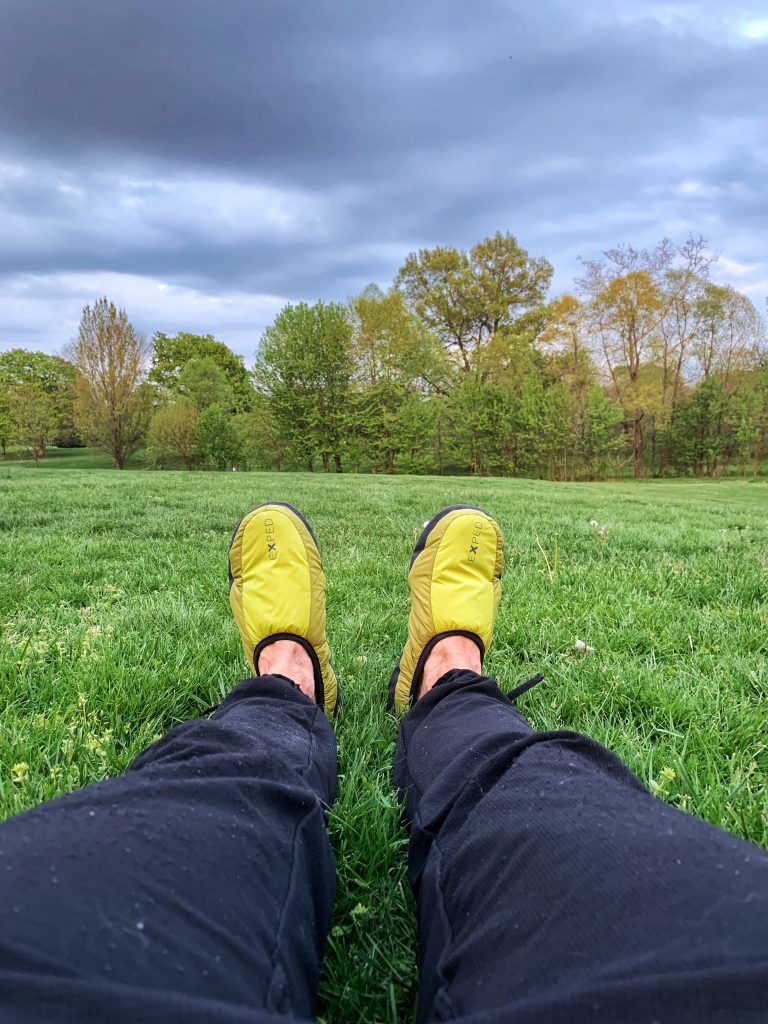
Features
The traction soles were one of the more impressive elements of the slippers. I have never owned a pair of down booties/slippers before, but I’ve heard friends tell stories of some Charlie Brown–esque slippage while wearing them in the backcountry. As such, I had little hope for the Camp Slippers. However, after wearing the slippers during two separate Midwestern ice storms and not losing any teeth from a pavement-punch, I can happily report that the slippers exceeded my expectations. Are we talking state-of-the-art Vibram leather stickiness? Of course not. Don’t be foolish. But they perform just as well as some of the rubber camp shoes I use in the warmer months.
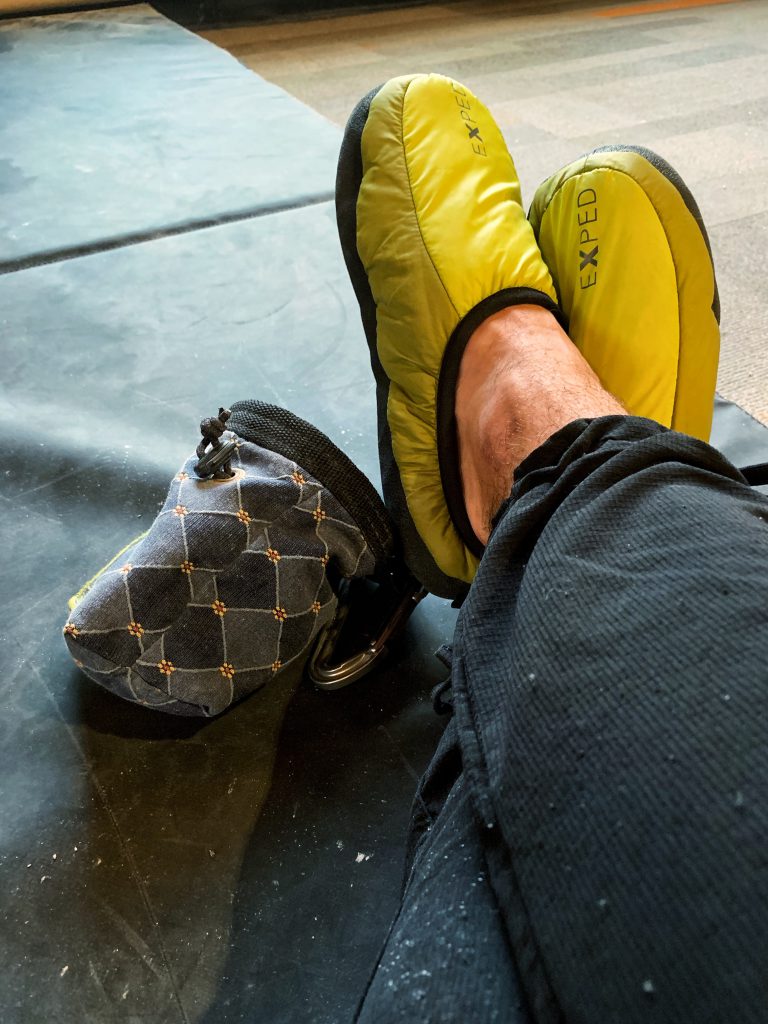
Size
I normally wear a size 11.5 shoe and chose the “Large” size per the Exped website recommendation. Initially, I thought the slippers felt a bit big, and that they left too much room around the ball of my foot. But then I remembered that they’re slippers, and they’re designed for comfort and lounging, not crushing boulder routes or putting in the miles. The fit was true to size, so follow the EXPED sizing recommendation (Small fits shoe sizes 5 – 7; Medium fits shoe sizes 7 – 9; Large fits shoe sizes 10 – 11; X-Large fits shoe sizes 12 – 13) and your feet will be happily swimming in the sweet warmth of polyester synthetic goodness. While we’re talking about size, the slippers pack down small, and are incredibly light. I threw them into my backpack for some bouldering missions and they took up less room than my gloves and beanie. I even forgot they were in there for several days and thought I’d lost them.
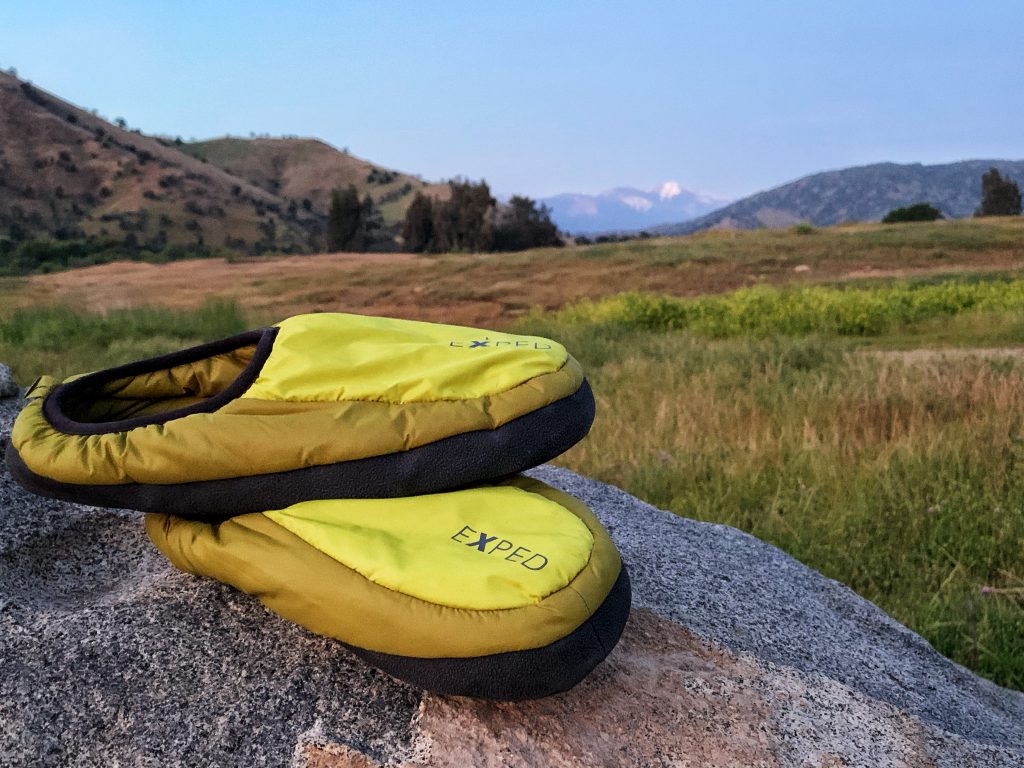
Room for Improvement
The EXPED website advertises that the outer shell of the slippers is coated in DWR. I didn’t feel it. I wore the slippers out into some light precipitation (snow and rain), and the tops of my feet immediately felt damp. I initially thought it may have just been my feet sweating out their joy of being in their own personal puffy sleeping bags, but upon further inspection, I realized that the top of the slippers had become quite saturated. Seeing as slippers are not the common choice for rainy weather, I can live with this KDWR (Kinda Durable Water Resistant) covering.
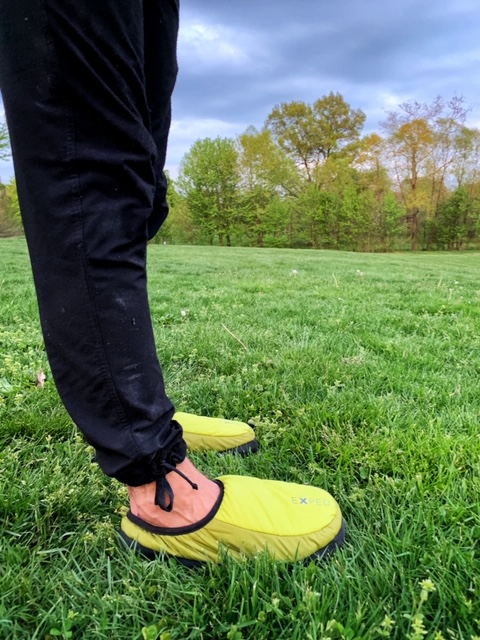
But the single largest flaw with these slippers is the fact that I found the bottom of the slippers to perform just as poorly in terms of water resistance. The rubber traction sole does not rise very high around the perimeter of the foot, and the area where the rubber is stitched to the synthetic covering seemed particularly permeable. I wore the slippers in wet grass and snow, and I could immediately feel wetness penetrating through the stitching. In the Midwest, the forest floor is almost always somewhat damp, and even that moisture was enough to penetrate through the material. EXPED seems to market these slippers as viable alternatives to down booties or other camp shoes, but I would be hesitant to take these slippers anywhere but arid climates. This shortcoming was definitely the most disappointing aspect of some otherwise fantastic slippers. I was looking forward to taking these babies on many early-spring, wet, Midwestern camping getaways. But I think I’ll opt for my camp shoes and thick socks, at least until the rains go away.
BUT! Although my feet did occasionally get wet and sad in the slippers, they dry fast. Like freaky fast. Like five minutes in the sun and totally dry fast. Also, the synthetic insulation did not seem to lose any warmth or loft after getting wet. I guess that’s the whole point of synthetic insulation versus down, but it was a welcome sight to see my neon-green foot burritos burst back to fullness after a few wet winter forays.
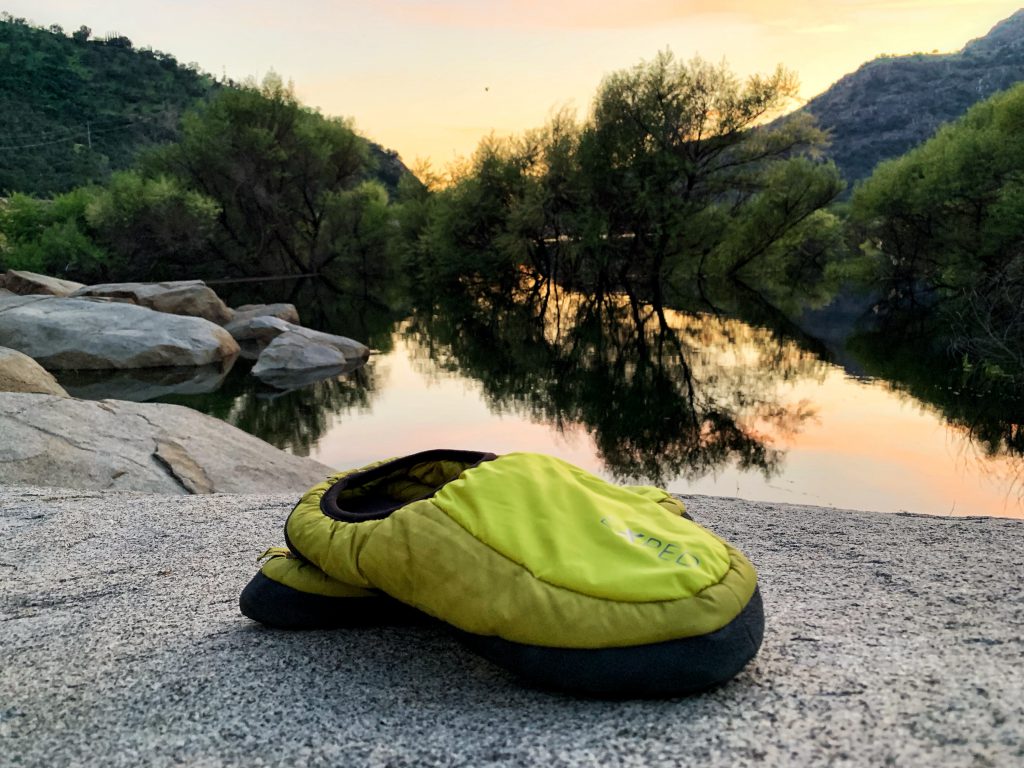
The Final Word
The EXPED Camp Slippers were perhaps the best addition to my shoe quiver this past winter. They work well in a variety of settings, but in my opinion are best kept for post-mission warming in your tent, car, or home. EXPED could greatly improve these slippers by making them more water resistant, and maybe by taking their large logo off the front of the shoes. (The fashion police are savage at my school.)
Find EXPED Camp Slipper on Outdoor Prolink. Not a member? Apply today!
Sean Buehler has worked as a climbing guide and outdoor educator for the past four years and is also youth climbing coach at Hoosier Heights Indianapolis, as well as a Search and Rescue Technician. He spends most of his time in the Midwest but has climbed in Mexico, Chile, Canada, Spain, and all over the United States. When not coaching or climbing, Sean is probably buried in his textbooks as he moves through medical school.

